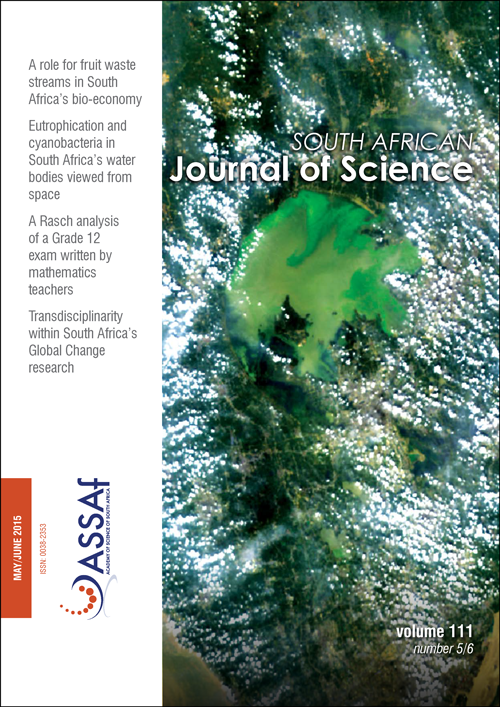Spatial soil information in South Africa: Situational analysis, limitations and challenges
DOI:
https://doi.org/10.17159/sajs.2015/20140178Keywords:
soil data, soil survey, digital soil mapping, natural resources, pedotransferAbstract
Soil information is vital for a range of purposes; however, soils vary greatly over short distances, making accurate soil data difficult to obtain. Soil surveys were first carried out in the 1920s, and the first national soil map was produced in 1940. Several regional studies were done in the 1960s, with the national Land Type Survey completed in 2002. Subsequently, the transfer of soil data to digital format has allowed a wide range of interpretations, but many data are still not freely available as they are held by a number of different bodies. The need for soil data is rapidly expanding to a range of fields, including health, food security, hydrological modelling and climate change. Fortunately, advances have been made in fields such as digital soil mapping, which enables the soil surveyors to address the need. The South African Soil Science fraternity will have to adapt to the changing environment in order to comply with the growing demands for data. At a recent Soil Information Workshop, soil scientists from government, academia and industry met to concentrate efforts in meeting the current and future soil data needs. The priorities identified included: interdisciplinary collaboration; expansion of the current national soil database with advanced data acquisition, manipulation, interpretation and countrywide dissemination facilities; and policy and human capital development in newly emerging soil science and environmental fields. It is hoped that soil information can play a critical role in the establishment of a national Natural Agricultural Information System.
Published
Issue
Section
License

All articles are published under a Creative Commons Attribution 4.0 International Licence
Copyright is retained by the authors. Readers are welcome to reproduce, share and adapt the content without permission provided the source is attributed.
Disclaimer: The publisher and editors accept no responsibility for statements made by the authors
How to Cite
- Abstract 1256
- PDF 4109
- EPUB 208
- XML 268













.png)